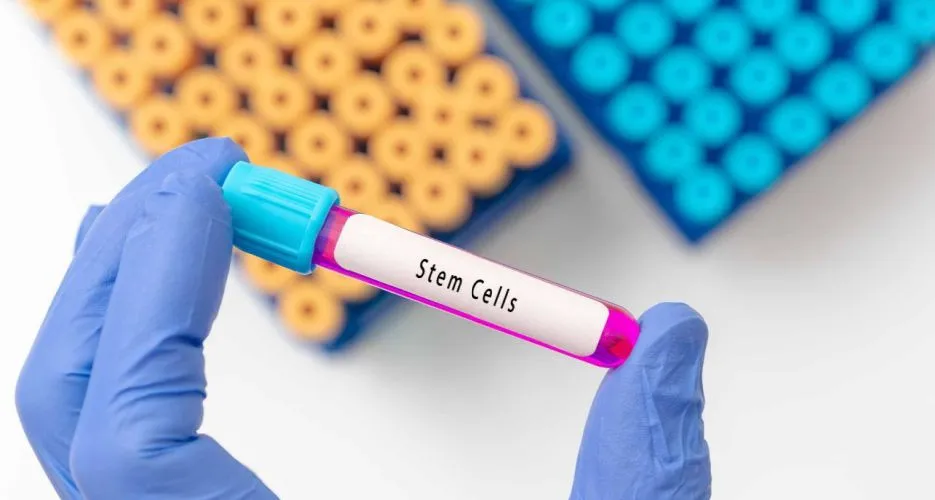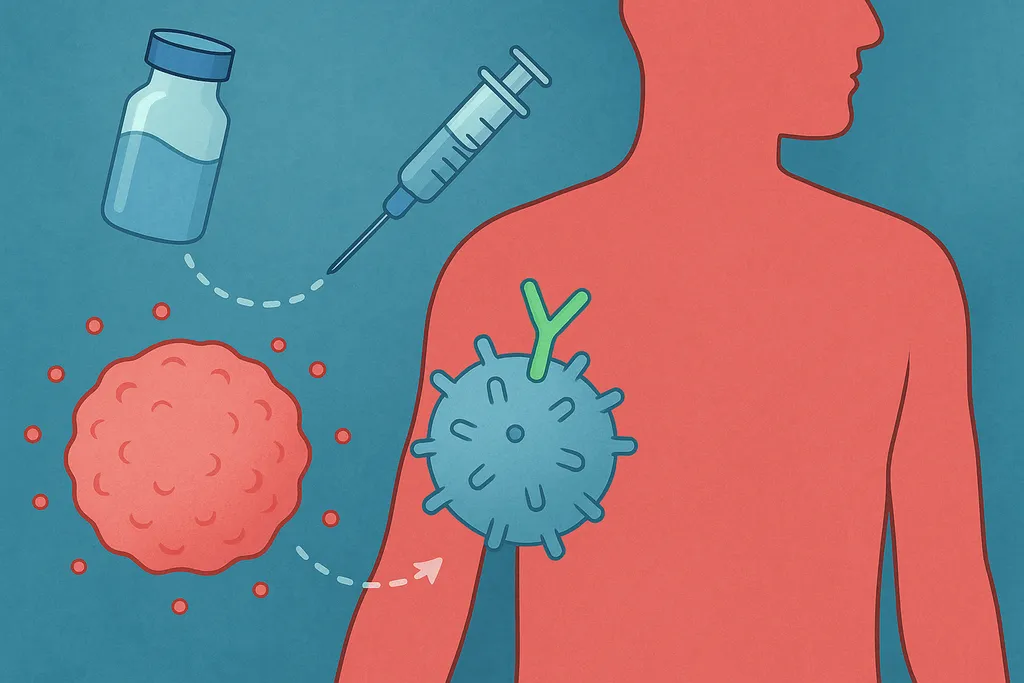BiTE Therapy Blinatumomab Now Approved as Consolidation Therapy for CD19 + Ph- B-ALL

Acute lymphoblastic leukemia (ALL) is a type of blood cancer that affects B- and T-lymphocytes, a type of white blood cell in charge of the immune response.
On June 14th, 2024, the FDA approved blinatumomab (Blincyto) as consolidation therapy for adult and pediatric patients with CD19-positive, Philadelphia chromosome-negative B-cell precursor acute lymphoblastic leukemia (B-ALL).
This approval allows treatment regardless of measurable residual disease (MRD) status, marking the third indication for blinatumomab in B-ALL. It is based primarily on a Phase 3 E1910 clinical trial (NCT02003222) led by ECOG-ACRIN Cancer Research Group.
Who Can Take Blinatumomab?
Blincyto or blinatumomab can be used in the following ways:
- Patients with B-cell precursor acute lymphoblastic leukemia (ALL) that is in the first or second complete remission
- Patients with CD19-positive B-cell precursor ALL that has come back or did not respond to treatment
- Philadelphia chromosome-negative ALL patients who are in the consolidation phase of chemotherapy
What are the Benefits of Adding Blinatumomab in the Consolidation Phase?
Consolidation therapy aims to eliminate any cancer cells left in the body. It is given after the cancer has disappeared following the initial therapy.
- Improved Survival: Adding Blincyto to consolidation chemotherapy significantly reduces the risk of death by 58%, showing better overall survival rates compared to chemotherapy alone.
- Clinical Trial Success: A Phase 3 trial showed a 3-year overall survival rate of 84.8% for Blincyto plus chemotherapy, compared to 69% for chemotherapy alone.
- First-in-Class Therapy: Blincyto is the only bispecific T-cell engager (BiTE) approved for this use, enhancing patients' treatment options.
- Improving outcomes regardless of MRD status: Allows more patients to benefit from therapy, deepens remission, and achieves more durable responses.
How Does Blinatumomab Work, and What Are BiTE Therapies?
Bispecific T-cell engagers (BiTEs®) are a specific type of bispecific antibody; they bind T-cells (immune system cells) to cancer cells to facilitate their elimination.
Blinatumomab or Blincyto acts by binding to a protein called CD3 on healthy T cells and a protein called CD19 on B cells ( the affected immune cells in ALL).
Blincyto is an innovative BiTE therapy that has been vital in treating B-ALL. It is given intravenously and has proven to be more effective than chemotherapy in treating children and young adults with B-ALL that has come back after initial treatment.
What Are the Side Effects of Blinatumomab?
Blinatumomab can cause serious side effects, including low blood cell counts, headache, infection, nausea, diarrhea, Cytokine Release Syndrome (CRS), and neurological symptoms. It is important for patients to be monitored closely by healthcare professionals during treatment.
Continue Learning About ALL and Treatment Updates, Visit Our ALL 101 Pages:
- What is Acute Lymphocytic Leukemia?
- What are the Signs and Symptoms of Acute Lymphocytic Leukemia?
- What Are Treatments for Acute Lymphocytic Leukemia
Sources:
- Blinatumomab
- Trial Suggests Expanded Role for Blinatumomab in Treating ALL
- FDA APPROVES BLINCYTO® (BLINATUMOMAB) IN CD19-POSITIVE PHILADELPHIA CHROMOSOME-NEGATIVE B-CELL PRECURSOR ACUTE LYMPHOBLASTIC LEUKEMIA (B-ALL) IN THE CONSOLIDATION PHASE
Acute lymphoblastic leukemia (ALL) is a type of blood cancer that affects B- and T-lymphocytes, a type of white blood cell in charge of the immune response.
On June 14th, 2024, the FDA approved blinatumomab (Blincyto) as consolidation therapy for adult and pediatric patients with CD19-positive, Philadelphia chromosome-negative B-cell precursor acute lymphoblastic leukemia (B-ALL).
This approval allows treatment regardless of measurable residual disease (MRD) status, marking the third indication for blinatumomab in B-ALL. It is based primarily on a Phase 3 E1910 clinical trial (NCT02003222) led by ECOG-ACRIN Cancer Research Group.
Who Can Take Blinatumomab?
Blincyto or blinatumomab can be used in the following ways:
- Patients with B-cell precursor acute lymphoblastic leukemia (ALL) that is in the first or second complete remission
- Patients with CD19-positive B-cell precursor ALL that has come back or did not respond to treatment
- Philadelphia chromosome-negative ALL patients who are in the consolidation phase of chemotherapy
What are the Benefits of Adding Blinatumomab in the Consolidation Phase?
Consolidation therapy aims to eliminate any cancer cells left in the body. It is given after the cancer has disappeared following the initial therapy.
- Improved Survival: Adding Blincyto to consolidation chemotherapy significantly reduces the risk of death by 58%, showing better overall survival rates compared to chemotherapy alone.
- Clinical Trial Success: A Phase 3 trial showed a 3-year overall survival rate of 84.8% for Blincyto plus chemotherapy, compared to 69% for chemotherapy alone.
- First-in-Class Therapy: Blincyto is the only bispecific T-cell engager (BiTE) approved for this use, enhancing patients' treatment options.
- Improving outcomes regardless of MRD status: Allows more patients to benefit from therapy, deepens remission, and achieves more durable responses.
How Does Blinatumomab Work, and What Are BiTE Therapies?
Bispecific T-cell engagers (BiTEs®) are a specific type of bispecific antibody; they bind T-cells (immune system cells) to cancer cells to facilitate their elimination.
Blinatumomab or Blincyto acts by binding to a protein called CD3 on healthy T cells and a protein called CD19 on B cells ( the affected immune cells in ALL).
Blincyto is an innovative BiTE therapy that has been vital in treating B-ALL. It is given intravenously and has proven to be more effective than chemotherapy in treating children and young adults with B-ALL that has come back after initial treatment.
What Are the Side Effects of Blinatumomab?
Blinatumomab can cause serious side effects, including low blood cell counts, headache, infection, nausea, diarrhea, Cytokine Release Syndrome (CRS), and neurological symptoms. It is important for patients to be monitored closely by healthcare professionals during treatment.
Continue Learning About ALL and Treatment Updates, Visit Our ALL 101 Pages:
- What is Acute Lymphocytic Leukemia?
- What are the Signs and Symptoms of Acute Lymphocytic Leukemia?
- What Are Treatments for Acute Lymphocytic Leukemia
Sources:
- Blinatumomab
- Trial Suggests Expanded Role for Blinatumomab in Treating ALL
- FDA APPROVES BLINCYTO® (BLINATUMOMAB) IN CD19-POSITIVE PHILADELPHIA CHROMOSOME-NEGATIVE B-CELL PRECURSOR ACUTE LYMPHOBLASTIC LEUKEMIA (B-ALL) IN THE CONSOLIDATION PHASE

about the author
Jimena Vicencio
Jimena is an International Medical Graduate and a member of the HealthTree Writing team. She has a passion for languages and is currently learning Japanese. In her free time, she loves playing with her cats. Jimena is also pursuing a bachelor's degree in journalism.
More on Treatment Advances

Get the Latest Acute Lymphoblastic Leukemia Updates, Delivered to You.
By subscribing to the HealthTree newsletter, you'll receive the latest research, treatment updates, and expert insights to help you navigate your health.









